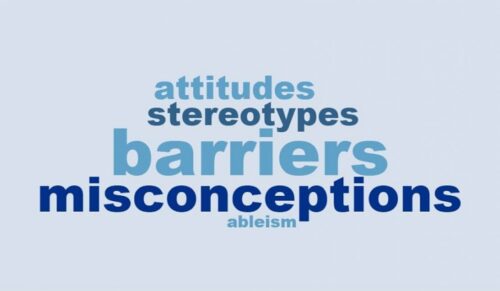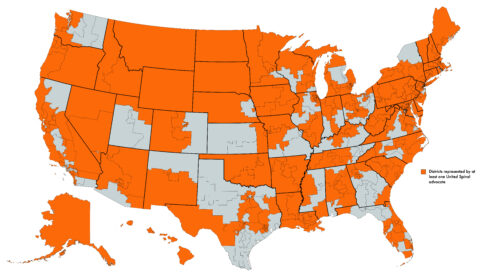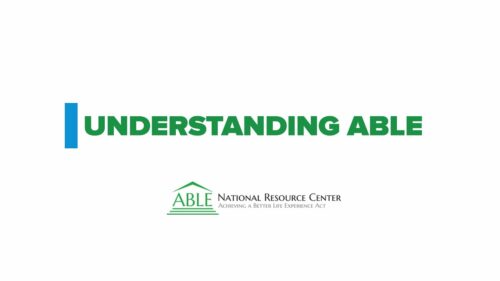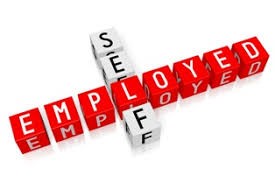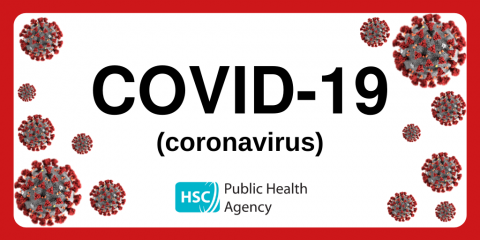Ableism is discrimination and social prejudice against people with disabilities and/or people who are perceived to be disabled. Ableism characterizes persons who are defined by their disabilities as inferior to the non-disabled.
Ableism refers to “discrimination in favor of able-bodied people,” according to the Oxford English Dictionary. But the reality of ableism extends beyond literal discriminatory acts (intentional or not) to the way our culture views disabled people as a concept. Ableism is also the belief that people with disabilities “need to be fixed or cannot function as full members of society” and that having a disability is “a defect rather than a dimension of difference,”
This interpretation of difference as defect is the true root of ableist acts that cause far too many to feel marginalized, discriminated against and ultimately devalued in this society. Here are just six forms of this behavior that, though largely normalized, need to be retired immediately.
1. Failing to provide accessibility beyond wheelchair ramps
Perhaps the most obvious form of discrimination people with disabilities face is the inability to access places and services open to their able-bodied counterparts — even with laws in place to prevent such inequality.
As Tumblr user The (Chronically) Illest noted, while most people think “just [putting] wheelchair ramps everywhere” is sufficient, true accessibility accommodates all types of disabilities — not just physical disabilities that specifically bind people to wheelchairs. Accommodations can also include “braille, seeing-eye dogs/assistant dogs, ergonomic workspaces, easy to grip tools, closed captions … class note-takers, recording devices for lectures” and other services and alterations.
2. Using ableist language
“When a critique of language that makes reference to disability is not welcome, it is nearly inevitable that, as a disabled person, I am not welcome either,” Rachel Cohen-Rottenberg wrote in a 2013 Disability and Representation article. But beyond individual feelings, ableist language can contribute to a foundation of more systemic oppression of people with disabilities as a group.
3. Able-bodied people failing to check their privilege
It may not seem like a big deal in the moment, but able-bodied individuals fail to recognize the privilege of having access to every and any space accessible. As Erin Tatum points out at Everyday Feminism, plenty of people may not directly discriminate against people with disabilities but effectively do so by using resources allocated for them. For example, many able-bodied people use handicapped bathroom stalls or take up space in crowded elevators, rather than taking the stairs and leave room for people with disabilities who don’t have other options, without a second thought.
4. Assuming people with disabilities have no autonomy
“There is a very narrow-minded perception of disability,” Cannington told Mic. “That narrow-minded assumption that all individuals with disabilities need and want certain things,” and assuming those individuals “constantly need help without actually asking the person [if they do],” is a common ableist experience Cannington and far too many others have faced.
“Automatically helping us without asking first should never be done,” Tiffiny Carlson said in a 2013 Huffington Post article. “We know when to ask for help. Just wait for us to speak up.”
5. Feeling entitled to know how people became disabled
“Able-bodied people will often assume that our existence represents some kind of mystery that they need to get to the bottom of,” Tatum explained at Everyday Feminism. But putting the onus on people with disabilities to explain themselves.
6. Assuming disability is always visible
Though their experiences are undoubtedly distinct from individuals with physical disabilities, people with non-apparent disabilities certainly face ableism as well. There is pervasive stigma surrounding mental illness, for example, and it can and often does lead to inequitable treatment, such as forced institutionalization and medication and a lack of agency in treating one’s mental health, Cannington told Mic.
In conclusion;
“As human beings we need to check our privileges in regards to our abilities,” Cannington concluded. “In order to harness the power and diversity and innovation of our society, we have to realize that our minds and bodies experience the world in very different ways. If we are able to create access and be more intentional about how we create access, then we are doing everyone good.”
Mic Magazine, by Julie Zeilinger, July 7, 2015
Every day, members of the United Spinal community face unequal access or exclusion due to physical barriers and ineffective policies, practices, or procedures. When frustrations arise in healthcare, mobility, education, work or limitations in quality of life, through grassroots advocacy, your personal experience becomes the seed that can bring about necessary change.
What Is Grassroots Advocacy?
Grassroots advocacy is an awareness initiative generated by concerned individuals that builds a community of support both on the ground and online. People seeking a solution use their own voices to contact organizations or local, state, and/or federal legislators regarding an issue that affects them directly. As a grassroots advocate, each of us has an opportunity to ‘plant seeds’ of concern and cultivate the kind of attention and action that solves problems. By sharing a personal story of need, your own experience and effort are what nurtures a movement to grow, like grass, and affect change across the country.
Anyone Can Be a Grassroots Advocate
Grassroots advocates are members and allies of a directly affected community, like you and me. This means, anyone who is personally affected by an issue has the power to act as a grassroots advocate. Many believe this is strictly the job of direct lobbyists, or those who politically advise on behalf of organizations and maintain professional lobbyist credentials, but it is not. There are also patient advocates, who support individuals on a case-by-case level in a medical setting. Grassroots advocates, instead, voluntarily speak on behalf of themselves and others for local, state or national policy change.
District Mobilization Program
United Spinal is building a grassroots movement across the country through our District Mobilization program. Our goal is to register enough advocates in all 435 Congressional districts to ensure that whenever United Spinal needs to reach out to Congress, every single Representative and Senator knows that we have broad support in the communities they represent.
If you register as an advocate with United Spinal, we aren’t looking for a big time commitment. Here’s what we’re looking for from our registered advocates:
- When United Spinal sends out action alert emails, take a minute to click on the “Take Action” link, make sure your name, address, and email address are entered correctly, and click the “Send Message” button.
- If you feel comfortable, share the link to our action alert with family, friends, or your networks on social media. You are not required to do this, but it helps to amplify our message.
- On occasion, United Spinal might reach out to you if we have a meeting scheduled with your Representative or Senator. It is entirely up to you if you want to participate.
That’s it! Of course, we encourage all of our advocates to get involved as much as they are able.
Finally, as part of our 75th Anniversary Advocacy Challenge, if you register as an advocate, you will be entered for a chance to win a substantial monetary prize, which will be awarded towards the end of the year.
So if you can, please register as a United Spinal advocate today, join the more than 600 advocates all across the country who have already signed up, and help us build an inclusive world together.
ABLE accounts encourage and assist individuals with disabilities and their families in saving private funds to help maintain health, independence, and quality of life and provide secure funding for disability-related expenses.
These accounts are tax-exempt and a qualified ABLE program established and maintained by a state, or by an agency of a state, pays for the following type of expenses: expenses for education, housing, transportation, employment training and support, assistive technology and personal support services, health, prevention and wellness, financial management and administrative services, legal fees, and other expenses. Your Medicaid and Supplemental Security Benefits are not cut due to your opening an ABLE account, except for certain distributions related to some housing expenses under the Supplemental Security Income program and for amounts in an ABLE account exceeding $100,000.
Change is made by the people who speak up.
That’s the most important principle of advocacy. People can believe very strongly in a principle or an idea, but unless they express it, those with the power to make that idea a reality will never know just how much support that idea has.
We at United Spinal know how important it is that every elected official – everywhere – hears from our community about our priorities, our challenges, and our perspectives on policies that affect us. That’s why we re-launched our Grassroots Advocacy Network this summer with the goal of having a critical mass of committed advocates in every congressional district in the United States.
This initiative is based on two basic principles. First, our community needs to stay engaged with our elected officials throughout the year. In order for all the good work that goes into our annual Roll on Capitol Hill to be most effective, it needs to be paired with emails and phone calls from our Grassroots Advocates to their members of Congress on issues of importance throughout the year.
Second, we know from experience that members of Congress place great value on hearing from their constituents. That is why we’re looking for individuals who are interested in sharing their stories and perspectives with staffers for their Representative and Senators as an ambassador for our community. Congressional staff will sometimes look to reach out to particular constituents to include them at official events, use their stories in speeches or at committee hearings, or ask for their perspective on how a policy they are considering would affect them. Building those kinds of relationships with Congressional offices deepens their bond with our community.
You can have just as much of an impact by sending messages through United Spinal’s Action Center and making phone calls throughout the year to your members of Congress as you could by meeting with their staff in Washington, DC. Both are incredibly important. Together, these forms of advocacy combine to provide a comprehensive outreach approach that allows United Spinal to best advocate for policies that benefit our community.
So, please consider joining the Grassroots Advocacy Network. We will send you action alerts on important issues throughout the year that we need our advocates to contact their Representatives and Senators about. The messages will be written for you – all you need to do is input your name, address, and email address and click send. We may also reach out to you if we are planning a virtual meeting with your Representative or one of your Senators. If you have any questions about this program, you can email United Spinal’s Advocacy and Policy team at advocacy@unitedspinal.org.
Self-employment is a solution for the person who wants to be self sufficient, productive and to be able to contribute to the economy but have challenges within the confines of a workplace setting. Issues such as transportation, dependence on caregivers and limiting conditions associated with the disability and perseverance of one’s own health are all qualifiers for choosing to work for yourself and have control over your abilities.
Self-employment is definitely worth exploration and you will find amplitude of great resources for people with disabilities to determine if this type of business organization is for you.
In addition to a productive lifestyle, the pride and fulfillment of owning and operating your own business, you may benefit from self-employment status in controlling your income level and maintaining needed benefits through business expense deductions for disability related work needs that may keep your income low enough for eligibility.
In addition, incentives for working while disabled may offer you some benefits that losing would not be worth being self-employed. One such program that has benefitted me by supplying health coverage for people with disabilities who get jobs is the IHSS Working Disabled 250% program.[1] Because I require a caregiver, I have been able to pay a monthly premium so that I can still earn money above the eligibility cut-off amount. This premium allows me to be Medi-Cal eligible without a huge share of cost to defray my caregiver and medical expenses.
Self-employment can be a realistic goal for people with disabilities. That being said, self-employment is not for everyone – disabled or not. Being your own boss and working at your pace and when you want to have appeal. That is if you are self-motivated and self-directional and disciplined!
Are you willing to make a business plan to outline how much profit you’ll need to keep your business afloat and cover your personal needs? Monitoring your expenses is vital for success. Keeping abreast of your industry and business conditions is just as important for the stay at home entrepreneur as it is for a multi-level corporation. Are you willing to learn how to be a successful entrepreneur?
Are you disciplined enough to stay on track to complete your projects as well as handle all the business administrative support that would be provided if you had a business organization behind you to support sales, billing, compliance with government and industry regulations such as taxes or licensing?
Fortunately, with today’s technology there a lot of apps that streamline and make these tasks easier for you. As well, there is an online gig economy where you can find low cost hires around the world to handle your business affairs.
Having a plan before venturing out on your own is important. Not only are you your own boss, you are your own administrative support; and head of marketing, bookkeeping, sales and Human Resources.
To succeed, you must do the following exercises to determine if your business will be feasible. In other words, how much money will your business need to make?
- What do you need to support yourself – i.e., your living expenses – food, rent, utilities, insurances, auto expense, cell phone, Netflix …… . Add up your living expenses.
- Would you be better off working for someone else or can you make it on your own? Let’s say your living expenses are $4,000/month or $48,000/year. If you work on average 40 hours a week on your business (with 2 weeks of holiday/sick time), then at a base minimum, your target hourly rate will be: $48,000 (40 hours x 50 weeks) = $24.00/hour
- Note – you’ll have costs of the business and your pricing strategy to determine what you will really need to make. This is just a rough estimate of what time commitment and profit you’ll need to survive.
- How much capital do you need to start your business? – I.e., equipment purchase or rental, supplies, labor, services, leases, licenses, taxes, etc…
- How much profit will you need to earn to grow your business, plan for contingencies and support the extras you desire in your own personal life. To calculate profit, you need to determine your expected business expenses and project your expected income.
- INCOME – EXPENSES = PROFIT/LOSS
- Is your business feasible?
- Will your profit cover your personal and business expenses, your capital costs, and as well costs to grow your business and cover unexpected contingencies?
By doing this business planning, you’ll get a feel of what will work and where you need to look at other options for efficiency or cost control. You’ll also be able to analyze where you can make changes in your plan to be successful such as controlling costs, creating efficiencies and developing competitive pricing strategies.
Lastly, and very importantly, you need to be honest with yourself to determine the amount of time, energy, skills and resources (i.e., cash) you can commit to your business goal. You also need to look deep into yourself and your purpose to be successful. Are you self-directional and self-motivated? Are you your good boss? Will you get things done?
What are your resources? Resources are more than cash. They include other means to support your business. Perhaps free rent or a family member that will work with little or no compensation when your funds are low?
Resources also include organizations that can help you get your business off the ground. Surviving as a self-employed individual is dependent on the “you eat what you kill” concept. Learning to be self-employed has a steep learning curve. Fortunately, you can find lots of resources to help walk you through the whole maze of developing your business – often free or low-cost.
Most communities have a Small Business Development organization. Here, in San Diego, Accion[2] is an excellent one offering education to prepare you, business development counseling, mentoring and even access to funding. Similar to entrepreneurial Training Programs offered in communities all across the country, take a look at the low cost $49 Refundable upon completion 10-week training program[3] offered by Accion. Research online and on YouTube for other instructional trainings.
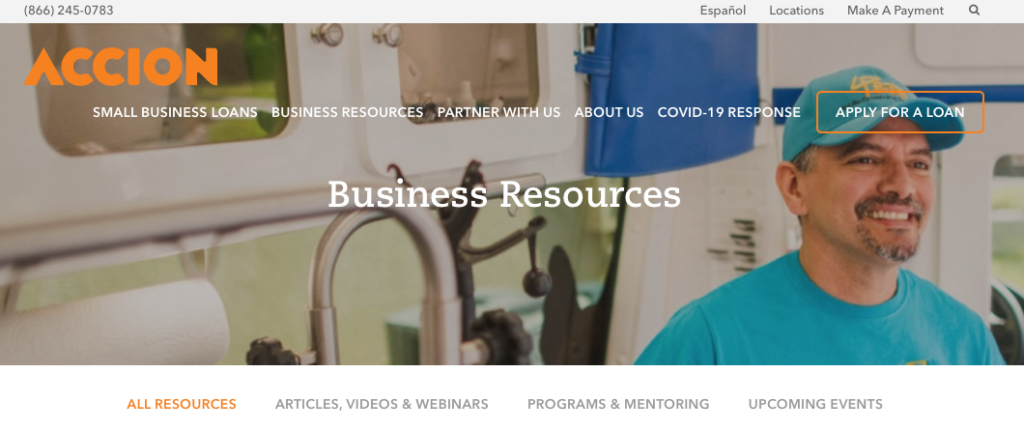
In addition, you will find governmental programs offering a cushion of support as an incentive to get people with disabilities into the workplace. Disability Benefits 101 is a great resource as a website with tools and information on employment, health coverage, and benefits. Further discussions of the resources I’ve mentioned in this article are included on this site.

- Social Security has a PASS (Plan to Achieve Self Support)[4] and a Ticket to Work[5] program that offer assistance in training, access to equipment needed and financing as well as retention of benefits so you’ll have a cushion for your housing, food and medical needs while you transition into self-employment.
- Your state has a Vocational Rehabilitation Program that will assist you in job retraining and/or readiness. Along with counseling, advice on resources and grants for education and equipment costs are provided.
- Often grants and other types of assistance are available to special groups such as Veterans or disability specific organizations or through your community. Research or talk to a counselor about your options
Understanding the income limitations of any benefits you receive is an important consideration. Many people with benefits choose not to work out of fear that they will lose their benefits. You can utilize the Disability 101 Benefits and Work Calculator[6] to see how your benefits may be affected. Fortunately, special considerations are often made to encourage employment. Often, transition steps are implemented so benefits are available even while working.
Here are a few other resourceful web sites that are useful to review if your re interested in pursuing self-employment.
The Office of Disability Employment Policy (ODEP)[7] is the only non-regulatory federal agency that promotes policies and coordinates with employers and all levels of government to increase workplace success for people with disabilities.

The Job Accommodation Network (JAN),[8] an ODEP-supported service, provides individualized technical assistance, consulting, and mentoring services to individuals with disabilities, family members, and service providers. JAN consultants handle each inquiry on a case-by-case basis offering self-employment and small business development expertise and referrals regarding business planning, financing strategies, marketing research, disability-specific programs, income supports and benefits planning, e-commerce, independent contracting, home-based business options, and small business initiatives for disabled veterans. JAN customers can expect to receive a resource packet tailored to their specific entrepreneurial goals with consultants available throughout all stages of the process who can provide ongoing supports.
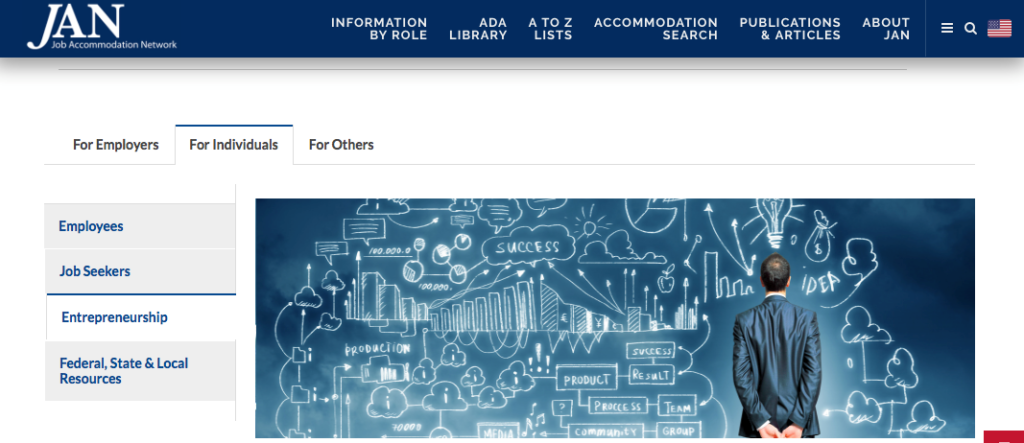
[1] IHSS Working Disabled 250% program. (https://ca.db101.org/ca/situations/youthanddisability/benefitsforyoungpeople/program2f.htm)
[2] Accion Nonprofit (https://us.accion.org/about-us/our-approach/)
[3] Accion Training Program (https://us.accion.org/resource/accion-academy-for-entrepreneurial-success/)
[4] PASS (Plan to Achieve Self Support (https://ca.db101.org/ca/programs/job_planning/pass/program.htm)
[5] Ticket to Work (https://ca.db101.org/ca/programs/work_benefits/ttw/program.htm)
[6] Disability 101 Benefits and Work Calculator (https://ca.db101.org/planning/(S(qrlfwcum5txht5v5igjqskky))/b2w2_start.aspx?screen=start&l=b2w2)
[7] The Office of Disability Employment Policy (ODEP) (https://www.dol.gov/odep/topics/SelfEmploymentEntrepreneurship.htm)
[8] JAN (https://askjan.org/info-by-role.cfm#for-individuals:entrepreneurship)
Look for Part 2 “Choosing Self Employment” by Tami Ridley in our June Newsletter
Over this past weekend, I was reflecting on my current situation and realized that I was happy and content. But when I looked to the future and thought, would I still be this happy and content a year from now or two years if everything stayed the same. Not quite sure so I asked myself three questions which I’d like to share with you.
- What do I like and dislike about my current life situation? I made a list hoping that the scale would be tipping more to the like side. Then its a matter of trying to keep the items on the like side as you move forward and looking to see what you can do about the dislike side. Can you fix things or simply eliminate them.
- Where do I want to be in three years? I choose three years but it can be whatever time frame works for you. So knowing where I am right now and where I want to be in three years, I just had to draw the roadmap. What will I need to do to make it happen. It’s good to choose small steps because if something isn’t happening as it should, it’s easier to make the adjustment and get back on track.
- Let’s jump ahead even further, I chose five years and what I need to do to retire. I made a list and as I wrote down action items, I put a timeline together on when I would like to have each action item completed. Here’s an example; I want to have the mortgage on the house paid off by the time I retire. So I have the action item, then I wrote down how I was going to achieve or complete it and then the time frame.
Most of us have some free time right now, so it seemed like a great opportunity to make my way through this little exercise. My roadmap is complete and I’m looking forward to digging in and making it happen. If you have questions or something you’d like to share, leave a comment.
If your plans involve going back to school or looking for employment, let us know how we can help.
During the “normal” days before the pandemic, if we were to be at home it was ok because if we got bored or had a bit of cabin fever we would just go out somewhere. But knowing that we can’t do that or shouldn’t be dong that changes our mindset and we know the best way to fend off the blues is to stay busy. Well as the days go by, staying busy becomes a bit more difficult. How many YouTube videos can we watch or Netflix movies. How many phone calls or text messages, how much time can we spend on social media before it all becomes somewhat dull. Then the blues, which by the way were just sitting back waiting, begin to creep in and our thoughts are less positive and our problems are more pronounced and overall we just feel less happy.
So what can we do to fend off the blues? For me, I’ve set up a schedule that I try to stick to each day, starting with that much needed cup of coffee and some breakfast. A side note here, since we are less active for obvious reasons we need to be more aware of what we eat and how much, otherwise when this is all said and done, we’ll be looking for a wider chair to roll. Next, I go over emails, I check out my social media pages and post an update or two, spend some time on YouTube looking some for fun and interesting videos, I took advantage of a special offer from Babbel and I’m hoping to learn Italian, I brought the Ukulele out of the closet, dusted it off and realized that this simple and small four stringed instrument is far more complex that I first thought. I’m working on developing some level of proficiency with the instrument. I then make a call or two to check on family and friends. I spend time goggling new resources that I can put up on our website to help our community. I must confess, I do have a video game that I enjoy playing so I spend some time with that and later in the evening I watch an episode or two of whatever series I’m watching on Netflix or Prime Video.
So as you can see, this plan helps to keep my mind active each day, it’s not a fool proof plan but it works for me. Certainly worth a try if you find that your mental state isn’t as fresh as it should be.
Ensuring People with Disabilities Can Access Prescription Drugs During the Current Crisis
March 13,2020
Many people with disabilities are at increased risk of serious or fatal complications from COVID-19 (coronavirus). In an active community outbreak, the safest option may be to self-isolate at home, perhaps for weeks or longer. In order to prepare for this possibility, the CDC is currently recommending that people at high risk stock up on necessities, including maintenance prescription medication.
Unfortunately, many people with disabilities can’t take this advice because of insurance restrictions. Insurers typically refuse to cover refills on 30-day prescriptions until only three to seven days of medication remain. For certain controlled substance prescriptions, patients may be legally unable to fill a new prescription until the date that the previous prescription is scheduled to run out.
These coverage restrictions could leave many disabled people in danger. Visiting the pharmacy can be risky for some people with chronic illnesses in even a normal flu season. Some people with disabilities may also face logistical challenges in getting to the pharmacy if in-home support services become disrupted due to a local COVID-19 outbreak. While many people can use mail order pharmacies to avoid this risk, localized outbreaks and social distancing measures may disrupt supply chains. We cannot stake our lives on the assumption that the availability of medications will remain stable in the coming weeks and months. We need to be able to stock up now, as the CDC recommends.
Disrupting treatment always endangers patients, but even more so in a pandemic. COVID-19 is expected to heavily tax the resources of the health care system. The need for inpatient treatment will likely exceed capacity in many communities. Even outpatient clinics are likely to have a high number of patients seeking treatment for COVID-19 symptoms, making avoidable visits risky for those more vulnerable to complications. Additionally, patients whose chronic conditions are destabilized are in danger of becoming more severely ill if they are infected with COVID-19.
Fortunately, a few insurance companies have taken measures to protect patients. In both Massachusetts and North Carolina, Blue Cross Blue Shield has waived early refill limits on 30-day maintenance prescriptions. Recognizing that most of us cannot simply wait for our insurers to behave responsibly, the Washington state insurance commissioner issued an emergency order requiring insurers operating in the state to cover early refills. On March 10th, the Center for Medicare and Medicaid Services issued guidance to Medicare Part D plans reminding them of their ability to relax restrictions on early refills and lift barriers to obtaining prescriptions from out-of-network pharmacies.
While these emergency policies still fail to provide sufficient protection for many people with disabilities taking prescribed controlled substances, they offer significantly more protection than the status quo.
To further safeguard access to treatment, there are some additional changes beyond allowing for early refills to standard insurance policy practices that would be beneficial. These include relaxing restrictions on prescription fills at out-of-network pharmacies and offering coverage of non-formulary drugs if supply chain issues leave patients with no available formulary options. Widespread adoption of such policies would go a long way toward protecting the lives of people with disabilities in the COVID-19 crisis.
On Friday, March 27, President Trump signed the Coronavirus Aid, Relief and Economic Security Act (The CARES Act). This is the third relief package approved by Congress and signed by the President in response to the health and financial crisis now confronting individuals and families, businesses (for profit and not-for-profit) of all sizes across diverse market sectors, the healthcare system and government at all levels. The more than $2 trillion economic rescue package is the largest relief package in U.S. history.
The CARES Act passed with overwhelming support of Democrats and Republicans, has over 800 pages of specific direction to the full spectrum of federal departments and agencies including Treasury, Health and Human Services, Labor, Social Security Administration, Education, Veterans, Housing and Urban Development, Centers for Medicaid and Medicare Services, Small Business Administration and Defense.
The relief includes direct payments to millions of Americans, expanded unemployment insurance, loans and grants to adversely impacted small and large businesses and additional funding to many existing government programs as diverse as homeless housing support, healthcare providers, community behavioral health clinics, suicide prevention programs, Centers for Independent Living, local and state education agencies, the WIOA workforce development system, veterans who are homeless or, as a result of the impact of the Coronavirus, are at risk of becoming homeless and owners and sponsors of properties who receive HUD Section 811 project-based assistance for individuals with disabilities.
National Disability Institute (NDI) has digested the CARES Act and the Families First Response Act and offers this preliminary analysis of the possible impact on individuals with disabilities and their families, disability-related nonprofit organizations and publicly-funded systems (education, health, workforce development) that must treat children, youth and/or adults with disabilities and their families as a protected class who should benefit from these targeted resources.
Visit congress.gov to read the law in its entirety.
We offer the following takeaways that require your attention and next steps for future action. Please share this information widely with individuals with disabilities and their families, disability-related nonprofit organizations and throughout your networks.
Under the Americans with Disabilities Act and other laws, you cannot be treated badly just because you have a disability or someone in your family has a disability, or because someone thinks you have a disability. You can ask for changes you need for your disability. The hospital and doctors have to help you unless it would be very dangerous or difficult, even with supports. This means:
• You can get medical care like everybody else. No one can deny you emergency care (like a ventilator) just because of your disability.
• You can bring a family member or other helper with you unless they are also sick.
• You can bring a trained assistance animal with you most of the time.
• You can bring your own stuff like a ventilator or wheelchair.
• You get good communication. If you are deaf you get ASL interpreting or CART. You can get papers in Braille or large print or in a computer file. You can get information in simple words.
• You can get information in another language. You can get an interpreter.
• You get help with follow-up care and services.
If you have a problem with a doctor or hospital during COVID-19, call Disability Rights California (DRC) at 1-800-776-5746 between 9:00-4:00. TTY: 1-800-719-5798. After 4:00 & weekends, leave a message or use this form: https://tinyurl.com/t9cgeu6
Si Usted o Alguien a Quien Conoce esta Discapacitado Conozca sus Derechos – COVID-19
Segun la Ley de Estadounidenses con Discapacidades y otras leyes, usted y su familia no pueden ser tratados mal simplemente por tener una discapacidad. 0 simplemente porque alguien piensa que usted tiene una discapacidad. Usted puede solicitar cambios necesarios para su discapacidad. El hospital y medicos deben ayudarlo a menos de que sea muy peligroso o dificil, incluso con ayuda. Esto significa:
• Usted recibe atenci6n como todos los demas. Nadie puede negarle atenci6n de emergencia (como un ventilador) solo por su discapacidad.
• Puede venir con un familiar o ayudante a menos de que ellos esten enfermos.
• Puede traer un animal que esta entrenado para asistirlo en el mayor de los casos.
• Puede traer sus propios implementos; como un ventilador o silla de ruedas.
• Obtendra buena comunicaci6n. Si es sordo/mudo, tendra interpretes de ASL o CART. Puede tambien obtener documentos en Braille, letras grandes o un archivo en la computadora. Puede obtener informaci6n con palabras simples.
• Puede obtener informaci6n en otro idioma. 0 recibir un interprete.
• Puede recibir ayuda con atenci6n y servicios de seguimiento.
Si tiene un problema con un medico u hospital durante el COVID-19, llame a Disability Rights California (DRC) al 1-800-776-5746 entre 9:00 am -4:00 pm. TTY: 1-800-719-5798. Si nos llama despues de las 4:00 pm o en fin de semana, deje un mensaje de voz o Ilene esta forma:
https://tinyurl.com/t9cqeu6

